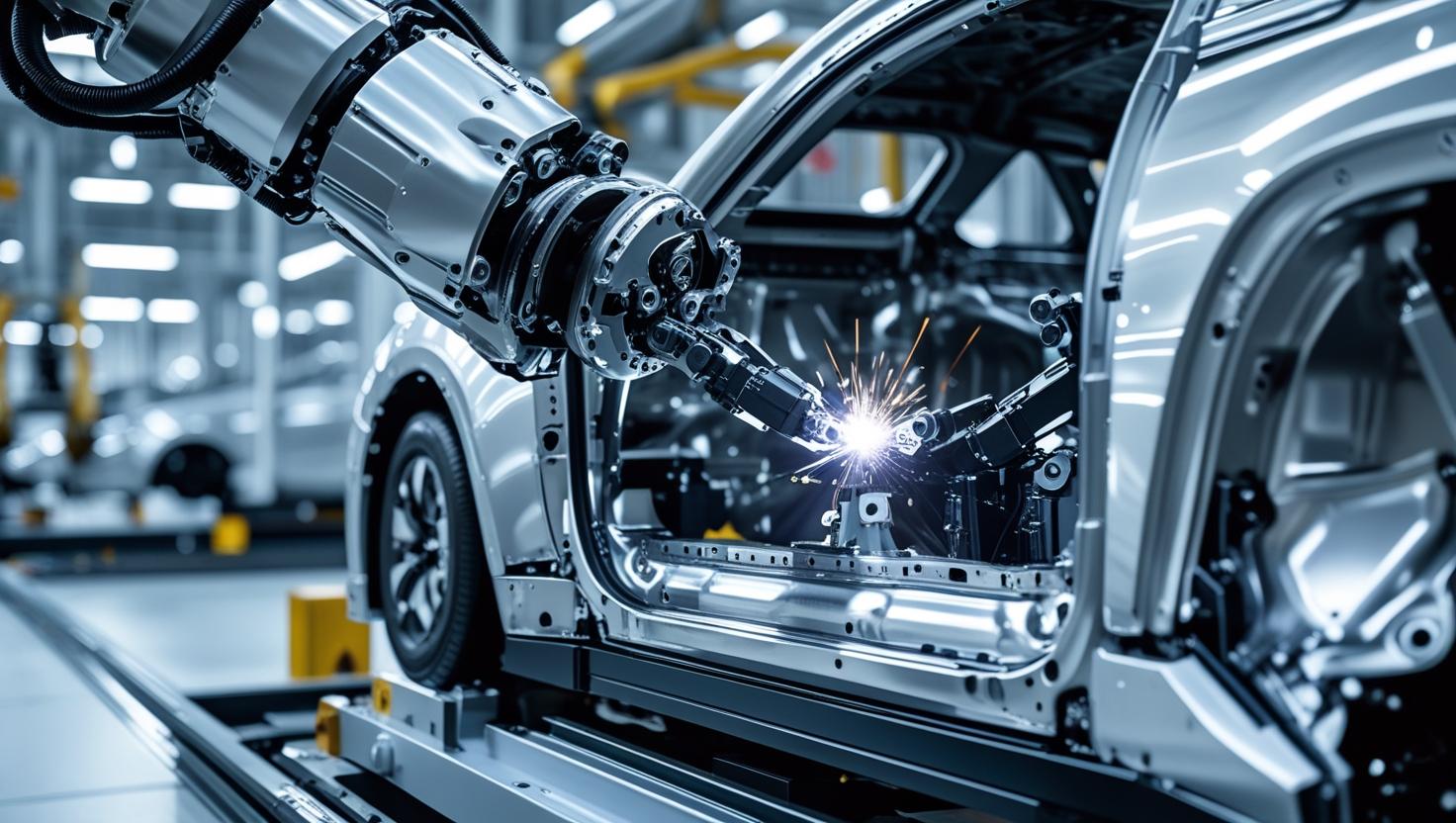The global automotive manufacturing equipment market is undergoing a transformative shift, poised to register steady growth through 2030. This growth is being driven by the worldwide move toward electrification, the integration of automation and digital technologies in production lines, and growing investments in modern, high-efficiency manufacturing systems. Automakers are retooling facilities to support the production of electric vehicles (EVs), adapt to shifting consumer preferences, and meet increasingly stringent environmental and safety regulations. These trends are reshaping the demand for sophisticated manufacturing equipment, driving innovation and competition across regions.
Electrification Reshaping Equipment Demand
One of the most significant factors accelerating the demand for new automotive manufacturing equipment is the surge in electric vehicle production. Unlike traditional internal combustion engine (ICE) vehicles, EVs require different manufacturing processes and specialized components, including lithium-ion batteries, electric drivetrains, and power electronics. As a result, automakers are investing in new lines for battery pack assembly, precision laser welding, high-voltage component integration, and automated end-of-line testing for EV-specific systems. The rapid growth of EV manufacturing—especially in Asia and Europe—is compelling equipment suppliers to offer scalable and modular solutions that can be rapidly deployed or customized for EV platforms.
Download PDF Brochure @ https://www.marketsandmarkets.com/pdfdownloadNew.asp?id=75023639

Industry 4.0 and the Rise of Smart Factories
The rise of Industry 4.0 technologies is redefining the automotive manufacturing landscape. Smart factories equipped with industrial automation, data analytics, artificial intelligence, and real-time monitoring systems are becoming the benchmark for competitive auto manufacturing. These technologies allow for better efficiency, reduced operational costs, and higher levels of customization. For instance, AI-driven quality inspection systems using machine vision can identify micro-defects in real time, while predictive maintenance tools help prevent equipment failure before it disrupts production. The integration of digital twins and cloud-based manufacturing execution systems (MES) is enabling a new level of transparency and adaptability in production environments. Consequently, automakers are increasingly seeking manufacturing equipment that is not only precise and durable but also digitally compatible and sensor-enabled.
Flexible and Modular Production Lines
In a market characterized by shorter model cycles and growing demand for vehicle customization, flexibility in manufacturing has become essential. Traditional rigid production systems are being replaced by modular and reconfigurable equipment that can adapt to different vehicle platforms, whether ICE, hybrid, or electric. This flexibility reduces downtime between model changes and supports just-in-time production methods. Modern robotic systems, for example, are now designed with advanced software that allows for quick reprogramming and dynamic task allocation. This shift enables manufacturers to pivot quickly as consumer demand evolves, especially in emerging markets where localization and speed-to-market are crucial.
Regional Growth Dynamics
Asia Pacific remains the dominant force in the global automotive manufacturing equipment market. Countries such as China, Japan, South Korea, and India continue to lead in automotive production volume, especially in the EV segment. China, in particular, has established itself as a global hub for EV manufacturing, supported by strong government incentives, domestic demand, and supply chain integration. The presence of major battery producers and EV startups further reinforces the demand for specialized manufacturing tools in the region.
Europe, meanwhile, is investing heavily in modernizing its auto production facilities to align with the EU’s decarbonization goals. German and French automakers are retrofitting plants with advanced robotics and clean energy-powered equipment to meet both domestic and export EV demand. In North America, the market is undergoing revitalization as the United States and Mexico attract new investments aimed at regionalizing EV supply chains. The U.S. Inflation Reduction Act and other government initiatives are encouraging both legacy manufacturers and new entrants to establish or expand local production capacity, driving up demand for high-end manufacturing equipment.
Competitive Landscape and Technological Leadership
The competitive landscape of the automotive manufacturing equipment market is populated by global automation and industrial technology leaders. Companies such as ABB, KUKA, FANUC, Siemens, and Rockwell Automation are playing a central role in driving innovation, offering integrated solutions that combine robotics, control systems, and real-time analytics. These players are not only supplying equipment but also partnering with OEMs to co-develop end-to-end smart manufacturing ecosystems. Strategic collaborations, acquisitions, and investments in R&D are helping these firms maintain technological leadership and respond to the evolving needs of the automotive sector.
Smaller players and niche technology providers are also contributing to market diversity, especially in emerging segments like battery production automation, laser processing, and lightweight materials handling. As the demand for specialized EV manufacturing capabilities grows, the market is expected to become more segmented and competitive, offering opportunities for innovation and differentiation.
Challenges and Constraints
Despite strong growth potential, the market faces several challenges. High capital investment requirements for modern manufacturing systems remain a barrier, particularly for smaller suppliers and regional manufacturers. In addition, the integration of new technologies into legacy production lines often requires complex planning and technical expertise, which may not be readily available across all markets. A shortage of skilled labor capable of operating and maintaining advanced equipment is also a persistent issue, particularly in developing economies. Furthermore, global supply chain disruptions, including semiconductor shortages and fluctuations in raw material prices, continue to impact equipment availability and project timelines.
Outlook Through 2030
Looking ahead, the automotive manufacturing equipment market is expected to continue its upward trajectory, with projected revenues surpassing USD 45–50 billion by 2030. The pace of electrification, the expansion of smart manufacturing capabilities, and the need for operational agility will remain the key forces shaping market evolution. Equipment that enables cleaner, faster, and more intelligent production processes will see heightened demand, especially in regions leading the automotive transition. As automakers seek to future-proof their operations, the role of advanced manufacturing equipment will be more central than ever before.
